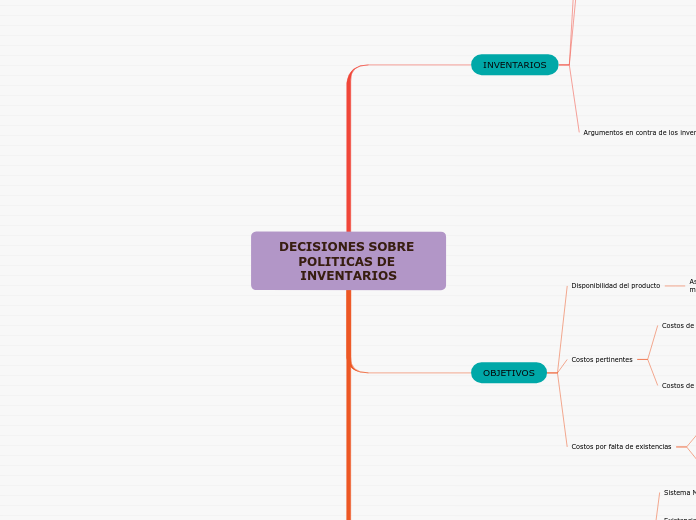door rocio garcia 4 jaren geleden
579
DECISIONES SOBRE POLITICAS DE INVENTARIOS

door rocio garcia 4 jaren geleden
579

Meer zoals dit

To name your story, you have to think about the overall message and what you want your audience to understand from the story. Also, make it relevant and easy to remember.
The ending of a story is essential. We all know that if the ending is weak, what happened before loses its importance. So make it unpredictable, but fair. A resolved ending answers all the questions and ties up any loose threads from the plot.
This is the closure section of the story.
See examples of possible outcomes below:
Try answering these questions to come up with a closure:
- Have all the problems been solved?
- Is there a clear picture of what happens with each character in the story?
- Has the challenge transformed your main character?
- How do the characters feel in the end?
This is the moment when the main character surpasses the last obstacle and finally faces their greatest challenge.
The climax usually follows one of these patterns:
Type in your answer.
The middle of the story is where you add layers of complications that will lead to the end. Reveal more about the character's journey. Did their personality go through changes? How did they overcome the challenges? And as you build up the story’s central conflict, make it more personal to that character. Also, from the middle act, you have to lead into the final act.
There wouldn't be any tension and excitement in your story if there weren't any obstacles in your character's way.
Cuando el cliente espera su pedido pero esta retrasada.
A story is nothing more than a character overcoming a series of difficulties to reach the desired goal. Obstacles usually create suspense and conflict. In overcoming obstacles, there is growth: weak becomes strong; hatred turns into love; sadness into happiness; wrong into right; lies into truth; or evil becomes good.
See a few examples below:
Ocurre cuando por falta de existencias del producto el cliente decide cancelar su requisición del producto.
Your character(s) need(s) motivation in order to solve the challenge(s).
Secondary characters might also have motives that lead them to cross paths with the main character or which might trigger them to help the main character.
Costos de riesgo de inventario
Costos de servicio del inventario
Costos de capital
Costos de espacio
Why does your character need to confront this challenge? What does he/she expect to accomplish by solving it?
See a few examples:
Costo de transmitir el pedido al lugar de suministro
Costo de por establecimiento del proceso
Precio o costo de manufactura
Each story has a main character and that character usually needs to solve a problem or challenge. The character's challenge is the one that creates tension throughout the story.
In most stories, there are 3 challenges. The number 3 is a mystical number symbolizing completeness. Try to come up with interesting challenges with which your character needs to struggle.
See a few examples below:
In the beginning of the story (or the exposition), you will need to introduce the setting and characters. You might also want to introduce the main conflict. This part of the story is important because it gives the reader necessary background information and maybe even a first insight into a character’s personality.
Creando un inventario virtual, los artículos agotados podían reemplazarse mediante un levantamiento cruzado desde otras ubicaciones, causa niveles generales de inventarios mas bajos y cantidades de surtimiento mas altas.
Más que planear inventarios en cada ubicación por separado, planear sus niveles en conjunto puede llevar a cantidades generales de inventarios más bajas.
Se dirige a controlar cada articulo del inventario, puede llevar al control preciso de la suma de todos los niveles de artículos del inventario.
Sistema Push
Es un sistema de fabricación en el que la producción, se basa en un plan de producción proyectado y donde la información fluye desde la gerencia al mercado, implica pronosticar las necesidades del inventario para así poder satisfacer las necesidades del cliente.
Sistema Pull
Este sistema permite reducir el desperdicio de cualquier proceso de producción, permite comenzar un nuevo trabajo solo cuando exista la demanda de un nuevo producto por parte del cliente.
No pueden rematarse sin un profundo descuento en el precio
Hay productos altamente estacionales
The setting (time & place) of a story can change throughout the plot.
The time of the story can also change. It can describe the event of a single day or can include an entire year's plot. Anyway, don't forget to mention it.
La compra adelantada implica adquirir cantidades adicionales de productos a precios actuales mas bajos, en vez de comprar a precios futuros que se pronostican más altos.
Your story can take place wherever your imagination will take you to.
For example: in an elevator, in an enchanted forest, etc. Don't forget to give details of the environment each time the setting changes, otherwise, the story can be confusing. Also, mention the seasons as each of them has unique weather and events.
Suministran un nivel de disponibilidad que el producto o servicio, puede satisfacer las expectativas del cliente en un tiempo mas corto.
Characters are essential to a good story. Usually, the protagonist(s) is/are the most affected by the plot. Introduce a character by focusing on their actions, interests, and occupation, as the physical appearance doesn't make a difference in most cases.
Type in the name of your character.
Practicas de colaboración en todo canal de suministros
What is your character's main goal?
Respuesta Rápida
Which traits best describe the character's personality? Choose more if necessary:
Comprensión del tiempo
Choose the type of your chacter: